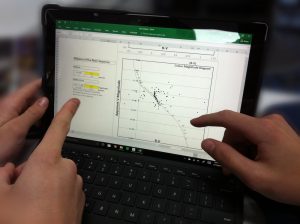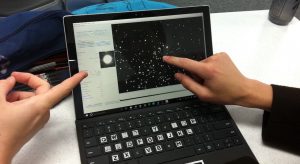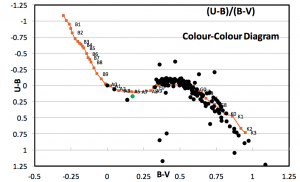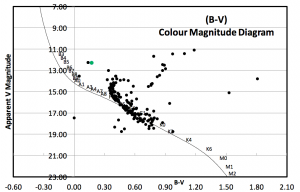The OSS project provides a flexible and highly customisable authentic science research investigation for students. This aspect means that it can be implemented as part of the general curriculum or as an elective, encompassing either recipe style investigations or open-ended inquiry investigations.
Having a background in astrophysics and being part of the OSS team, allowed me even more flexibility when it came to implementing a research project using the OSS material. Michael and myself had discussions about how best to implement the part of the project in a short timeframe and identify the key knowledge and skills that needed to be emphasised. Michael was always available to help think through obstacles and how best to modify the steps to suit. This allowed me to run ideas by him and even modify sections as required.
Prior to the topic, I implemented the Astronomy Knowledge Questionnairre, to get an understanding of where the students were with regards to their astronomy knowledge, which allowed me to determine how much scaffolding was required.
A small section of the OSS project was implemented as a five week research project for my Year 11 Physics class. I gave the students a quick overview of the basics, and then they jumped straight into their research investigation. The theory was taught as part of the research, which meant that students were not overloaded with information and required them to do some independent learning. The project we focussed on was to determine the distance and age to star clusters. Select worksheets were used to scaffold students along the way, in the form of mini exercise/tutorials.
Given the short timeframe, students (in pairs) were provided with archived images, rather than taking their own images. The students carried out UBV photometry using the Aperture Photometry Tool and then used the provided spreadsheet to create a Colour-Magnitude Diagram, determine the extinction, distance and finally the age of the open cluster.
In addition, for students who wanted to explore the topic of exoplanets, we modified one of the sections in the OSS material to allow them to carry out precision photometry on archived images kindly provided by LCO. This project still needs to be refined, however, it highlighted the intricacies involved in exoplanet hunting. This is an example of the flexibility and potential scope for using OSS. This project is currently being refined and developed, so stay tuned!
Overall, this was my first time implementing OSS in the classroom and it was a smooth ride owing to the flexibility afforded by the material and the support during implementation.
Saeed Salimpour
Physics Teacher
Victoria, Australia




